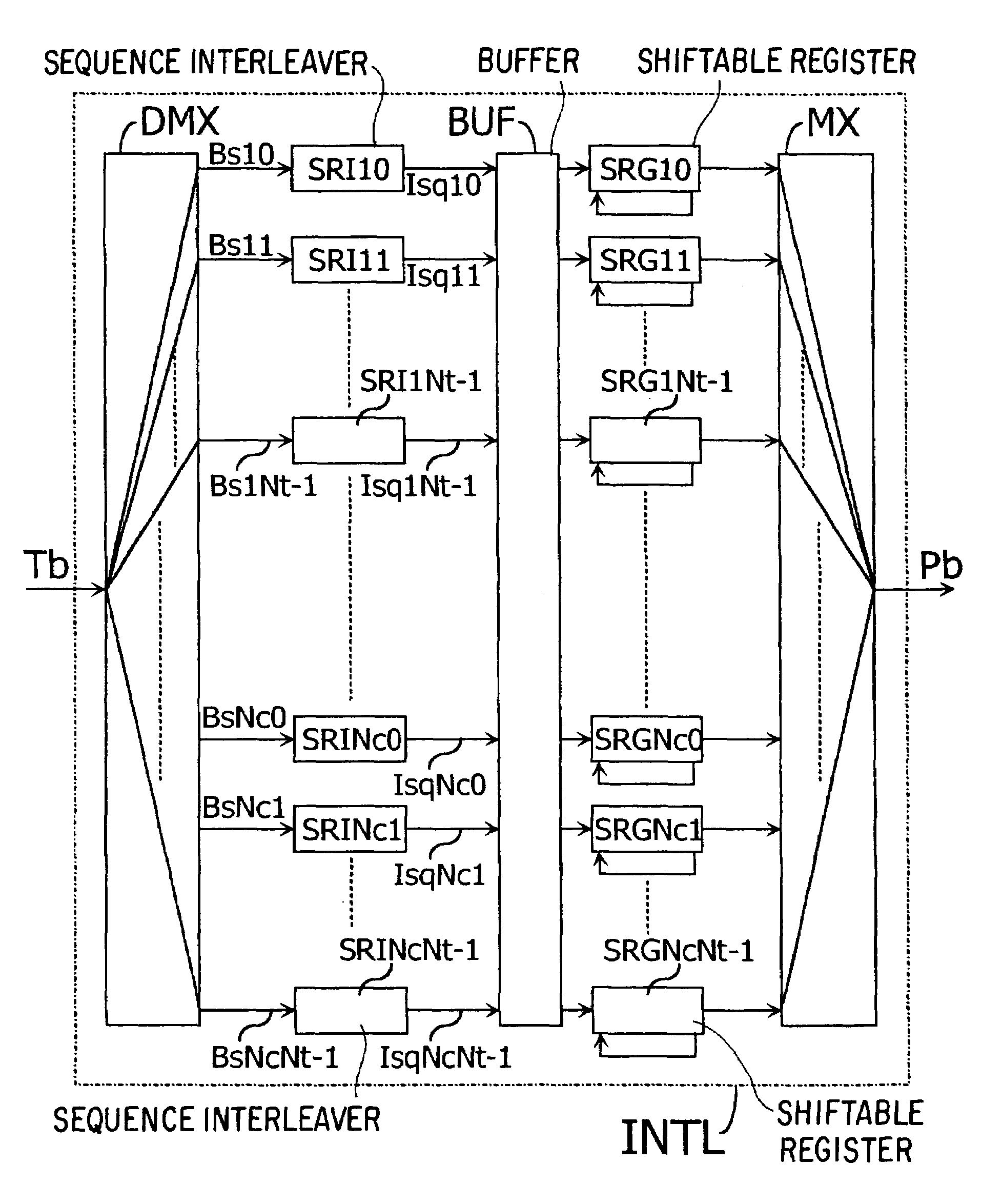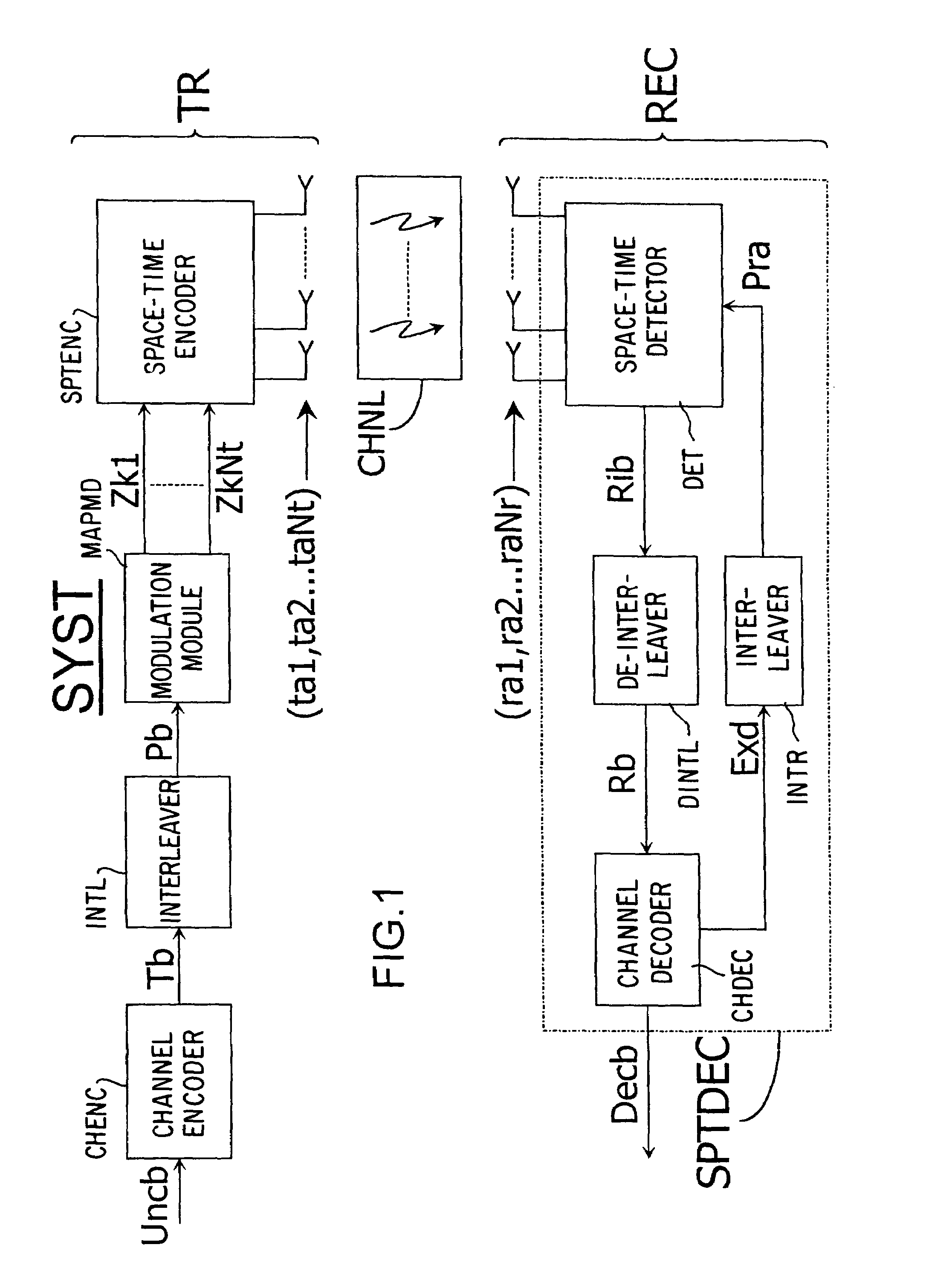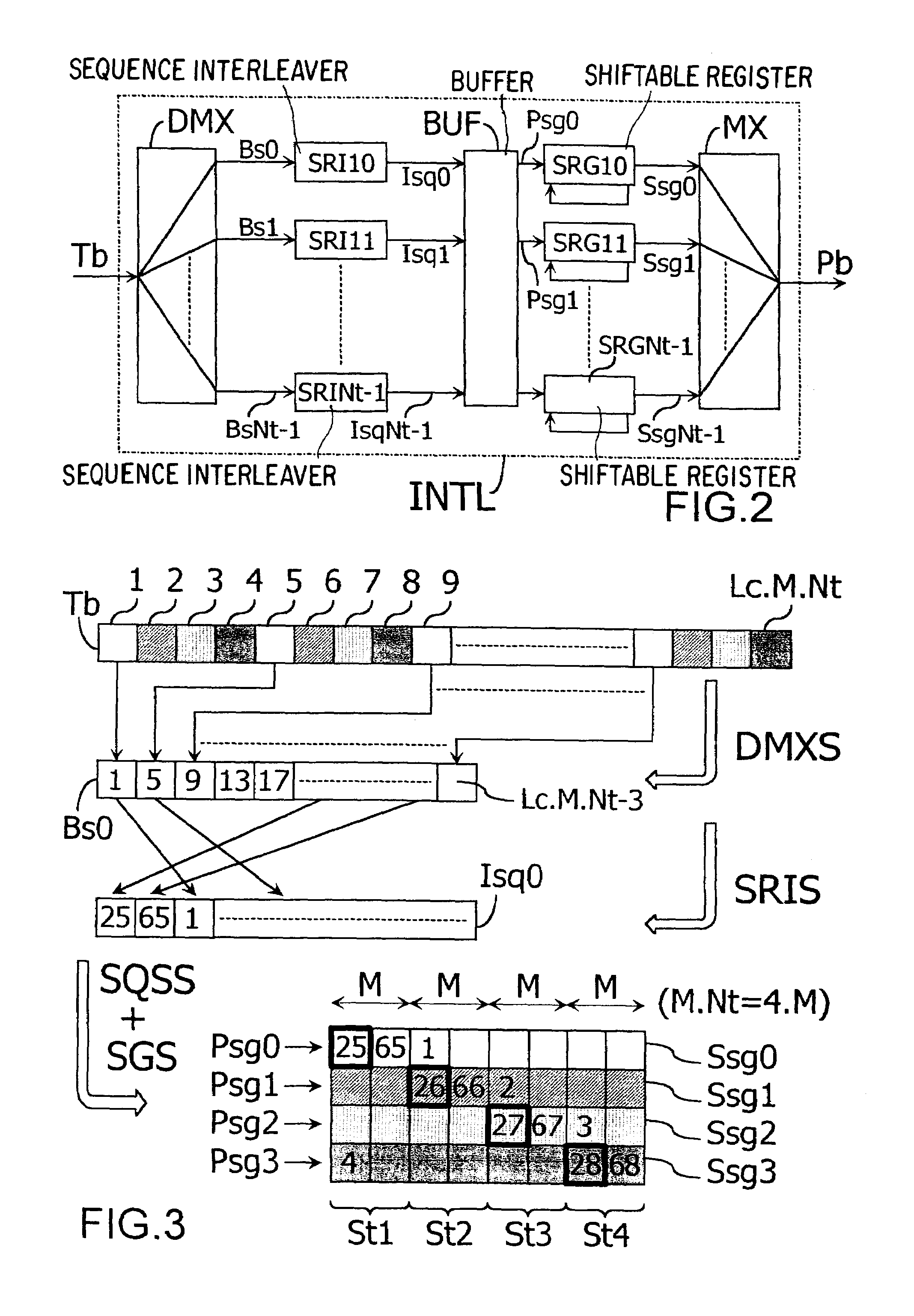Method for transmitting optimally interleaved data in a MIMO telecommunication system
a technology of telecommunication system and data, applied in the field of optimal interleaved data transmission in a telecommunication system, can solve the problems of reducing the time-related diversity of data sent to the receiver, limiting the performance of the space-time decoder included in the receiver, etc., to achieve better decoding performance, increase the diversity of input data, and improve the effect of quality
- Summary
- Abstract
- Description
- Claims
- Application Information
AI Technical Summary
Benefits of technology
Problems solved by technology
Method used
Image
Examples
Embodiment Construction
[0047]FIG. 1 diagrammatically shows a telecommunication system including at least one transmitter TR and one receiver REC, intended to exchange signals through multiple communication channels CHNL established between Nt transmitting and Nr receiving antennas (ta1,ta2 . . . taNt) and (ra1,ra2 . . . raNr), respectively.
[0048]The transmitter TR shown in the example depicted here includes a channel encoder CHENC intended to apply an encoding, e.g. by means of a convolutional code or of a turbo code, to uncoded data bits Uncb, and to provide a binary stream of encoded data bits Tb to be transmitted. The transmitter TR includes interleaving means INTL intended to generate permutated bits Pb, such an interleaving being useful for a later processing on the receiver side, since it will allow to obtain uncorrelated data. The permutated bits Pb are then divided into sequences of M.Nt bits each, which bit sequences are then mapped, i.e. transformed into a series of coded symbols Zk by a mapping...
PUM
 Login to View More
Login to View More Abstract
Description
Claims
Application Information
 Login to View More
Login to View More - R&D
- Intellectual Property
- Life Sciences
- Materials
- Tech Scout
- Unparalleled Data Quality
- Higher Quality Content
- 60% Fewer Hallucinations
Browse by: Latest US Patents, China's latest patents, Technical Efficacy Thesaurus, Application Domain, Technology Topic, Popular Technical Reports.
© 2025 PatSnap. All rights reserved.Legal|Privacy policy|Modern Slavery Act Transparency Statement|Sitemap|About US| Contact US: help@patsnap.com



